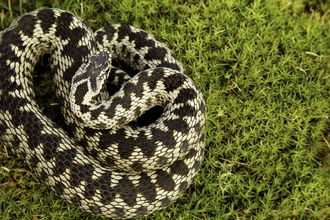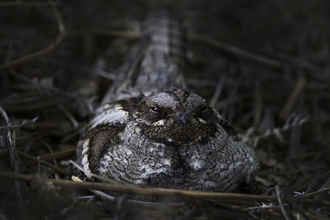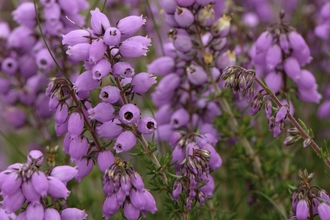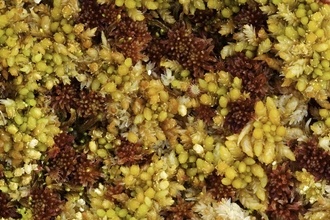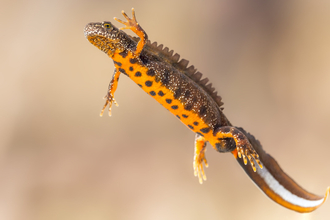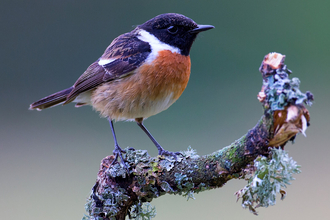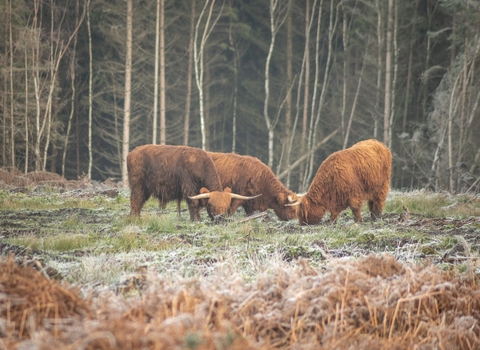We’ve partnered with Foresters’ Forest to carry out conservation grazing in the Forest of Dean. The project aims to protect and enhance wildlife in the Forest by creating areas of open habitat, especially heathland.

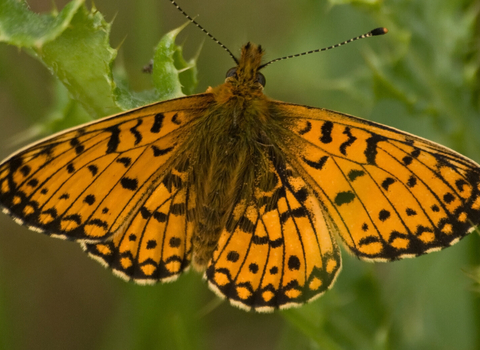
WildNet - Bob Coyle
Did you know that forest doesn't just mean trees?
The Forest of Dean is one of the most important areas for wildlife in the UK, supporting habitats and species of national and European significance, but it’s not just the trees supporting wildlife.
Thousands of years ago, a variety of grazing animals would once have roamed here, including European bison, wild ox and beavers. Their different methods of grazing and disturbance created a dynamic landscape of trees, scrub, heathland, marshes, grassland, groves and thickets. This in turn would have helped to develop rich and diverse wildlife communities.
Since the reduction of natural grazing animals, the Forest has seen a decline in species that relied on the more open habitats these animals created - such as the small pearl-bordered fritillary butterfly, which was previously found at over 50 different places in the Forest and now remains in just two.
In order to enhance and protect this mosaic of different habitats; cattle, sheep and ponies have been introduced to help create and maintain open spaces, especially heathland.
What will the project deliver?
The project will create improved heathland habitat which will evolve from the conservation grazing, creating and linking open habitat over a large area in the Dean. The expanded open habitat will sit within a wider mosaic of habitats - scrub, wetland, woodland and copse.
Three nature reserves, currently managed by Gloucestershire Wildlife Trust: Wigpool, Woorgreens and Edgehills are part of this project. These reserves have been selected as they already centre on established heathland, with wildlife that would benefit the most from the introduction of conservation grazing to link existing habitats.
The project will involve fencing about 80 hectares of land in order to create habitats and enhance them through grazing using ponies and cattle. Within the permanent fenced area, temporary fencing will be used to divide the site into compartments to allow grazing levels to be manipulated.
What can I get involved in?
Forest of Dean and Newent Area Stock Checkers Wanted
Help us look after our Highland cattle, Exmoor Ponies and Hebridean Sheep.
We are looking for people to join our team of volunteers who help manage our livestock and ensure their welfare in the Forest of Dean and Newent area. We provide all training required so contact us if you’re interested. Tel: 01452 383333.
Can I hear first-hand from the stock-checkers?
You can also read our blog by Kevin Caster, GWT Land Manager, where he talks about conservation grazing livestock and the important work done by the dedicated team of volunteer stock checkers. You can hear first-hand from Mike Ingleby and Sarah Spindler, two volunteer stock checkers, as they describe their experiences when out in the field.
“I’ve loved being involved with them all and it has been fascinating to observe how they each contribute to the Grazing Project – the sheep do a great job eating any brambles, whereas the ponies are good at browsing gorse. And seeing how the Highland Cattle use their horns to access leaves from the top of silver birch saplings is really funny!”
You can read the full blog post here.
How to look after the Forest's wildlife and livestock
- Please dont feed the animals, they may learn to follow visitors for food
- Admire grazing animals from a 10m distance; they're happy to have visitors and have their picture taken but need their own space
- Keep dogs on a lead
- Enjoy a bike ride but be sure to stick to stone surfaced tracks and pass grazing animals slowly
- Don’t leave picnic or food remains, grazing animals may eat these and become sick
- Always bag and bin dog poo or take it home with you. Dog poo contains worms and diseases which can be passed onto humans and animals, and will spoil others’ enjoyment of this beautiful nature reserve
-
If they approach you, calmly move away
-
Follow the Countryside Code
Animal Welfare is monitored by local volunteers and staff. In an emergency call our 24 hours service on 01452 389951.

WildNet - Amy Lewis
Locations of current livestock in the Forest of Dean
Last updated: 24 September 2024
8 Exmoor Ponies - Snows Farm nature reserve
4 Highland Cattle – The Park nature reserve
2 Highland Cattle – Wigpool nature reserve
13 Highland Cattle – Woorgreens nature reserve
23 Hebridean sheep – Simpsons Meadow nature reserve
10 Herdwick sheep – Vell Mill nature reserve
Heathland heroes and woodland wonders
Discover some of the species that need open areas within the Forest to survive.

